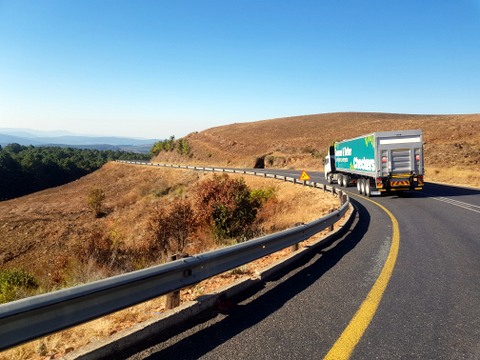Understanding the Root Causes of Trucking Collisions
A Complete Guide to Increasing Driver Safety
This article may contain affiliate links.
Trucking collisions are a significant roadway concern, leading to tragic accidents, property damage and loss of life. These incidents often result from a combination of factors. Understanding their root causes is crucial to improving safety in the trucking industry. Trucking collisions are rarely the result of a single element. Instead, they often involve a complex interplay of various causes. Understanding these common causes is essential for developing strategies to prevent collisions effectively. This comprehensive guide explores the factors contributing to trucking collisions, their impact on road safety, and the measures that can be taken to avoid them.

Speeding
Pressure to meet delivery deadlines or reckless behavior can lead to speeding by truck drivers. Speeding reduces a driver’s ability to react to sudden changes in traffic, increases stopping distances and makes collisions more severe. In this case, encourage adherence to speed limits, install speed-limiting devices, and foster a safe driving culture within your company. After all, in truck accident settlements, if it is proven that the truck driver was speeding or driving at an unsafe speed at the time of the collision, it can significantly impact the outcome of legal proceedings and liability determinations. Ultimately, prioritizing safe driving practices and adhering to speed limits enhances road safety and plays a pivotal role in preventing trucking collisions and their potential legal ramifications.
Driver Fatigue
Long hours on the road, tight delivery schedules and inadequate rest periods can lead to driver fatigue, impairing a trucker’s alertness and reaction times. Fatigue-related collisions are hazardous, as drowsy drivers may fail to brake or swerve in time to avoid an accident. Implementing strict hours-of-service regulations, promoting proper rest breaks and providing driver education on the dangers of fatigue are vital preventive measures. Also, fostering a company culture that prioritizes driver well-being and discourages excessive workload expectations can reduce driver fatigue and its associated risks. Recognizing the signs of fatigue and encouraging drivers to report when they feel tired can also help proactively address this critical safety concern.
Distracted Driving
Distractions such as texting, phone calls, eating or adjusting in-cab technology can divert a truck driver’s attention from the road. Distracted driving significantly increases the risk of collisions, as drivers may fail to notice stopped traffic, road hazards or changing traffic conditions. It is necessary to enforce strict no-phone policies, provide hands-free communication options and raise awareness about the dangers of distraction. Furthermore, implementing advanced driver assistance systems (ADAS) and in-cab technologies designed to minimize distractions can be a valuable investment for trucking companies looking to enhance safety. Regular training programs that emphasize the importance of staying focused while driving and the potential consequences of distracted driving can further reinforce safe practices among truck drivers.
Inadequate Training
Inexperienced or inadequately trained drivers may lack the skills to handle complex road situations or adverse weather conditions. Lack of training can result in poor decision-making, incorrect maneuvers and an increased risk of collisions. Implement comprehensive training programs for new drivers, ongoing training for experienced drivers and mentorship programs. Additionally, it’s crucial for training programs to incorporate real-world scenarios and hands-on experience, allowing drivers to develop practical skills that are essential for safe and effective driving in diverse conditions. Continuous evaluation and assessment of drivers’ performance can help identify areas requiring additional training or improvement, contributing to safer roadways for everyone.

Mechanical Failures
Neglected maintenance, faulty equipment or inadequate pre-trip inspections can lead to mechanical failures, such as brake or tire problems. Mechanical failures can cause sudden loss of control, leading to accidents that might have been preventable with proper maintenance. Enforce regular maintenance schedules, conduct thorough pre-trip inspections, and address issues promptly. Moreover, integrating telematics systems and predictive maintenance technologies can assist in identifying potential mechanical problems before they escalate into critical failures, enhancing overall safety and reliability. Encouraging a proactive approach to maintenance within the trucking industry can prevent accidents and contribute to cost savings and operational efficiency.
Weather Conditions
Adverse weather, including rain, snow, ice and fog, can reduce visibility and road traction, making it challenging to control a truck. Poor weather conditions increase the likelihood of accidents, especially when drivers fail to adjust their driving behavior accordingly. Encourage drivers to exercise caution, reduce speed and receive training on driving safely in adverse weather. Additionally, providing drivers access to up-to-date weather information and forecasts can help them make informed decisions about route planning and driving conditions. Trucking companies must emphasize that safety precedes delivery deadlines when adverse weather conditions are present, ensuring that drivers prioritize their well-being and that of others on the road.
Trucking collisions have far-reaching consequences, but with a concerted effort to understand and address their root causes, everyone can make roadways safer. Through education, technology, regulation, and industry collaboration, everybody can work toward preventing trucking collisions and reducing the toll they take on lives and livelihoods. A safer future on the road is within reach when everyone prioritizes safety and commits to continuous improvement in the trucking industry.

5 thoughts on “Understanding the Root Causes of Trucking Collisions”